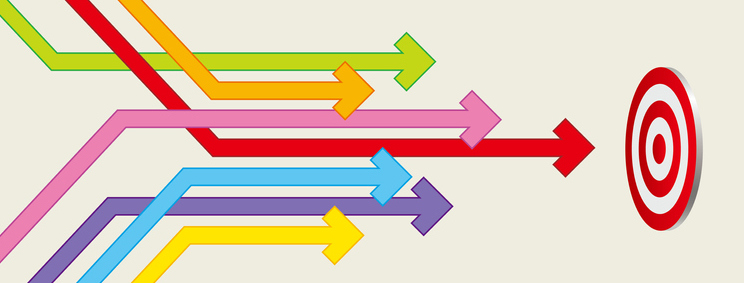Editor’s note: Christina Boris is global director of survey research at Coleman Research Group, New York City.
In my current role, I oversee a team that conducts surveys with hard-to-reach audiences every day. We are often tasked with surveying elusive professional segments. Based on our experience, I’ve compiled some best practices for surveying niche B2B audiences. This list is not exhaustive – there are other best practices that can be implemented. However, I’ve found that the practices outlined below are particularly effective at helping to ensure a successful recruit and execution of a survey project with an obscure segment. They are especially powerful when used in combination with one another.

- Develop a “bull's-eye” profile: Create a detailed profile of the respondents you are looking to target beyond just the standard demographics like title, industry, company size and geography. Include specific criteria that the respondents will need to meet to qualify for the survey. Things like special skills, experience, expertise or level of decision-making authority required; knowledge of a particular topic; types of clients or vendors they work with (or patients for health care audiences); products used, etc. Doing this as a first step can help facilitate some of the other best practices outlined here.
- Estimate survey feasibility: Once the bull's-eye profile is created, I recommend estimating the number of professionals who might meet the specific criteria in your profile. For example, let’s say you are looking for customers of a niche product. A good next step is to try to determine how many current customers this niche product has. You can do this through desk research, referencing syndicated research, talking with colleagues who are knowledgeable on the topic or (if sample is readily available) running an incidence check. This will give you insight into how broad or niche your target audience is. It will also help you determine whether a survey is even feasible based on the total possible pool of respondents, especially when you factor in typical survey response rates. I recently had a client who was targeting professionals in a relatively large industry, but their bull's-eye profile was so narrow that they were only going after 3% of the total universe. Turns out, it was too small of a group to target for a survey.
- Assess respondent accessibility: It’s helpful to look into whether the nature of your target audience’s work would make it difficult for them to participate in survey research. For example, you might need to give additional thought to how you would recruit professionals who don’t have desk jobs and work in the field, or employees who work in highly regulated industries where their employers might restrict their participation in surveys. Some industries (i.e., government) prohibit their employees from participating in research, so you might need to reach out to respondents who formerly worked in that industry to get feedback.
- Set an enticing incentive: A meaningful incentive can help boost participation rates and the numbers of surveys you are able to collect. This is especially true if you are working with a small universe because you’ll need a higher proportion of these individuals to respond to your survey in order to hit your target sample size. Some effective incentives I’ve seen with hard-to-reach professional populations are generous cash awards or information that would be of high value to that audience like an industry report.
- Craft laser-sharp screening questions: Develop air-tight screeners based on the criteria in your bull's-eye profile. Oftentimes, just screening on title alone is not enough when targeting niche B2B audiences. Ideally, you want to craft a set of questions around the day-to-day activities of the target audience to ensure you are screening in the right people. I’d also recommend including a trick question, to screen out any imposters who try to cheat their way in. (And there are a lot of people who will try to cheat their way in when you offer an enticing incentive!).
- Carefully select the launch timing: One thing to keep in mind is that certain professional audiences have peak seasons or may be very busy due to current market conditions. For example, survey response rates have been slower with certain health care audiences during the COVID crisis because many of these individuals are essential workers who are on the front lines working long shifts. You’ll want to take this under consideration when planning out your project so that it does not fall flat due to low response rates or take much longer to complete than originally anticipated due to slower response time.
- Launch on a weekday: For best results, launch surveys with hard-to-reach professionals during the work week when they are more likely to be checking their work e-mails and answering their office phones. In our experience, the response rates for weekend launches tend to be a lot lower with this type of audience.
- Custom recruit by phone as needed: Many hard-to-reach B2B audiences cannot be found in panels, which is why it’s so challenging to target them! One workaround is to develop a database of prospective target respondents and custom recruit them through a combination of e-mail and phone outreach. This is often more expensive and time-consuming to do, but it’s a particularly effective way to reach, screen and survey niche B2B audiences.
